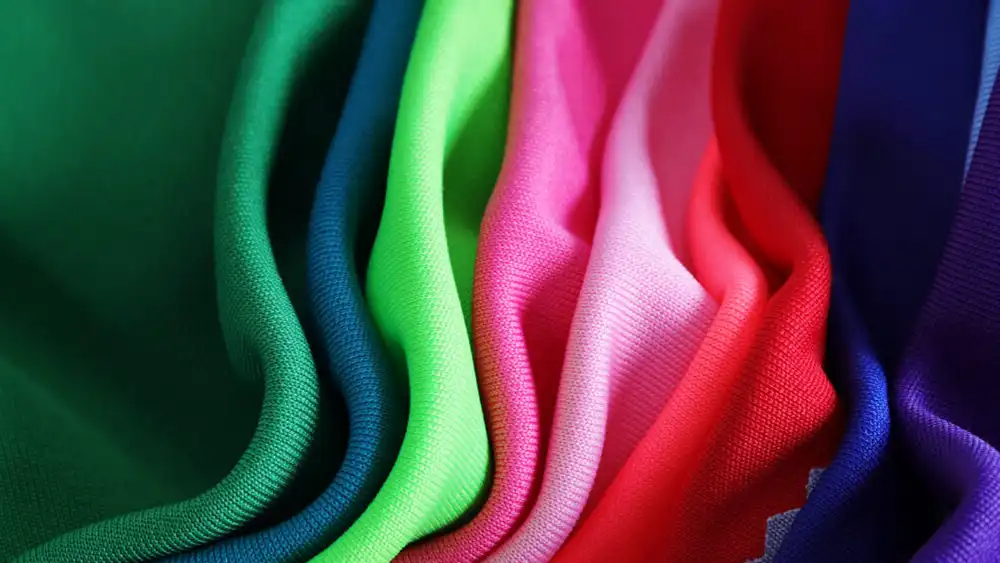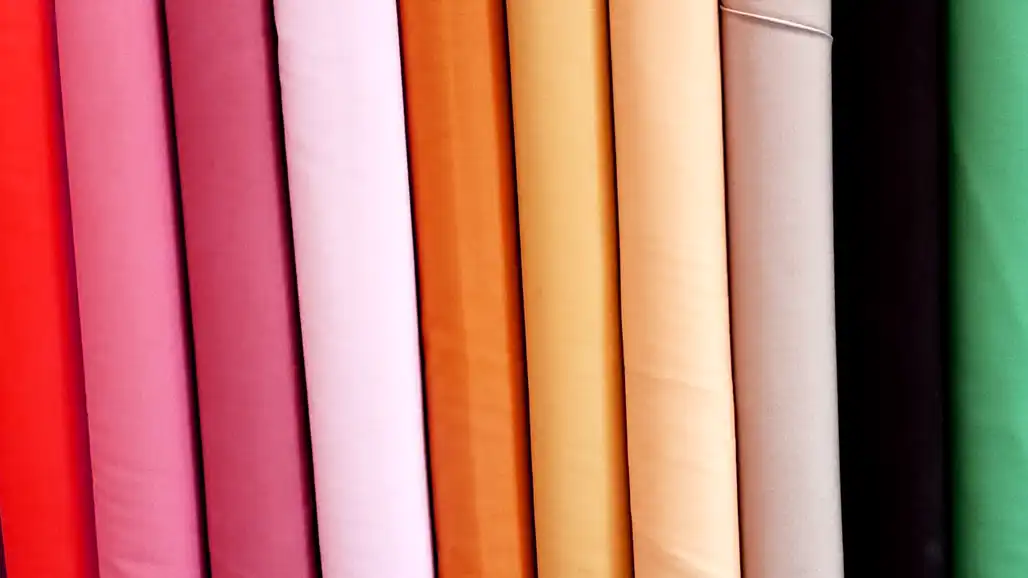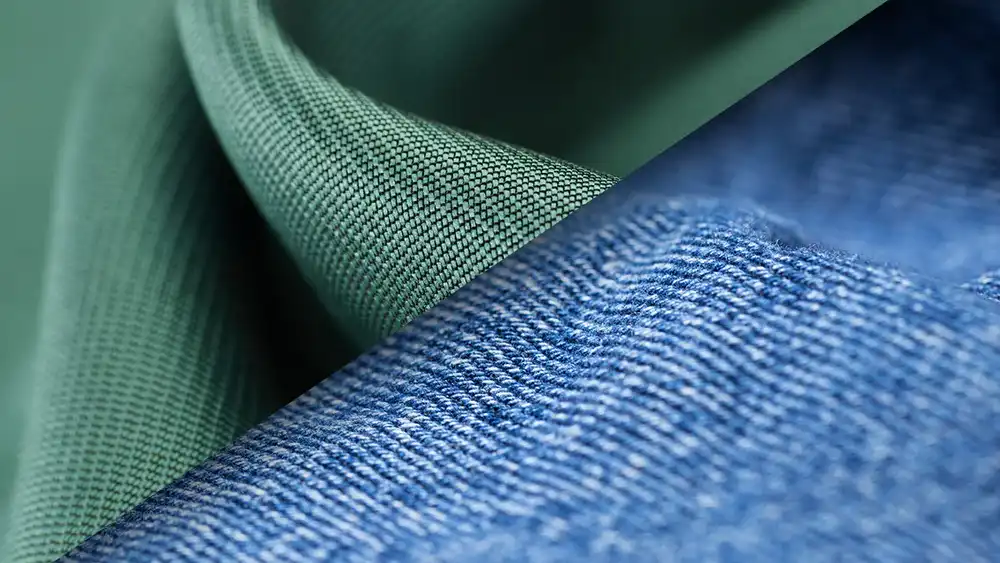Have you ever gazed longingly at a gorgeous fabric, unsure if it’s destined for a dress or a dazzling quilt? The world of textiles can be vast and bewildering, especially regarding apparel and quilting fabrics. Both offer a stunning array of colors, patterns, and textures, but their functionalities can differ greatly.
This blog post is here to shed light on the key distinctions between apparel and quilting fabrics. We’ll delve into the characteristics of each, explore their ideal uses, and equip you with the knowledge to confidently choose the perfect fabric for your next project, whether you’re crafting a flowy maxi dress or a cozy patchwork quilt. So, grab your sewing supplies and get ready to embark on a textile adventure!
What is Apparel Fabric?

Apparel fabric, as the name suggests, is any fabric specifically designed to be made into clothing. Here’s a closer look at its key characteristics and what sets it apart from quilting fabric:
Focus on Wearability:
- Comfort is king (or queen) with apparel fabrics. They prioritize feeling soft and pleasant against the skin, allowing for breathability and movement.
- Drape is another crucial factor. Different apparel fabrics drape in unique ways, some flowing beautifully for dresses and skirts, while others hold their shape for structured jackets or pants.
Variety of Weights and Materials:
- Apparel fabrics come in a wide range of weights to cater to different garments and seasons. Lightweight fabrics like cotton voile or linen are perfect for breezy summer dresses, while heavier options like wool or fleece are ideal for warmth in winter coats.
- The materials used in apparel fabrics are vast, with natural fibers like cotton, silk, and linen being popular choices due to their breathability and comfort. Synthetic fibers like polyester and nylon also play a significant role, offering wrinkle resistance, durability, and sometimes moisture-wicking properties. Knits, a specific construction method that creates stretchy fabrics, are another essential category within apparel fabrics, perfect for t-shirts, leggings, and other comfortable clothing.
Wider Widths:
- Apparel fabrics are generally wider than quilting fabrics, typically ranging from 44 to 60 inches. This wider width allows for easier garment construction with fewer seams, especially for wider pieces like pants or skirts.
Examples of Apparel Fabrics:
Here are some of the most common types of apparel fabrics you’ll encounter:
- Woven Fabrics: Cotton, linen, silk, denim, wool, corduroy, flannel
- Knit Fabrics: Jersey (t-shirt fabric), fleece, french terry, ponte knit, ribbed knit
By understanding the focus on wearability, the variety of weights and materials, and the wider widths, you can easily identify an apparel fabric when browsing through a fabric store or online selection.
What is Quilting Fabric?

Quilting fabric is a specialized type of fabric specifically designed for creating quilts. Unlike apparel fabrics that prioritize comfort and drape, quilting fabrics focus on structure, printability, and piecing to bring your quilt top visions to life. Here’s a breakdown of its key characteristics:
Strength and Stability:
- A quilt is meant to be a cherished and well-used item, enduring multiple washes and years of enjoyment. Quilting fabrics are known for their tight weave and durability, ensuring they can withstand the construction process and years of use.
Focus on Piecing and Printability:
- Quilts are often constructed from pieced blocks with vibrant colors and intricate patterns. Quilting fabrics cater to this by offering a wide variety of colors, prints, and designs that work well when pieced together.
Standard Width:
- Quilting fabrics typically come in a standard width of 44 inches. This width is ideal for creating quilt blocks that can be easily assembled into a larger quilt top.
Material:
- While quilting fabrics can come in various materials like silk or wool, cotton is the most popular choice. Cotton’s breathability, affordability, and ability to take dye well make it a perfect match for creating beautiful and long-lasting quilts.
Here are some of the most common types of quilting fabric you’ll encounter:
- 100% Cotton: The go-to choice for quilters, offering affordability, durability, and a wide variety of colors and prints.
- Batik Fabric: Features vibrant, hand-dyed patterns using wax resist techniques.
- Flannel: A softer cotton variety, often used for quilt backings or adding a touch of warmth to the quilt top.
- Solid Colors: Essential for creating contrasting blocks or backgrounds in pieced quilt tops.
By understanding the focus on strength, piecing compatibility, standard width, and the prevalence of cotton, you can confidently identify quilting fabrics when selecting materials for your next quilt project.
Difference Between Quilting Fabric and Apparel Fabric

The key differences between apparel fabric and quilting fabric lie in their intended purpose. Let’s break it down:
Focus:
- Apparel Fabric: Designed for wearability. Comfort, drape, and movement are top priorities.
- Quilting Fabric: Designed for structure and piecing. Strength and printability are key for creating quilt tops.
Properties:
- Apparel Fabric:
- Weight: Varies greatly, from lightweight (voile, linen) for summer clothes to heavyweight (wool, fleece) for winter wear.
- Materials: Natural fibers (cotton, silk, linen) for breathability and comfort, or synthetic fibers (polyester, nylon) for wrinkle resistance and durability. Knits (jersey, fleece) offer stretch for comfortable clothing.
- Drape: Plays a crucial role. Fabrics drape in different ways, some flowing for dresses (chiffon) while others hold their shape for jackets (canvas).
- Width: Generally wider (44-60 inches) for easier garment construction with fewer seams.
- Quilting Fabric:
- Weight: Medium weight is most common for good balance between structure and ease of piecing.
- Materials: Primarily cotton for breathability, affordability, and ability to take dye well. Other materials like silk or wool are less common.
- Drape: Less important, as drape doesn’t significantly impact quilt functionality.
- Width: Standard width is 44 inches, ideal for creating quilt blocks.
Examples:
- Apparel Fabric: Cotton voile, linen, silk, denim, wool, fleece, jersey (t-shirt fabric)
- Quilting Fabric: 100% cotton, batik fabric, flannel, solid color quilting fabrics
Can You Use One for the Other?
- Apparel Fabric for Quilting: In a pinch, you can! But consider drawbacks:
- Drape and weight: May not drape as well or be too heavy, affecting the look and feel of the quilt.
- Durability: Some fabrics (silks, rayons) might not hold up well to multiple washes.
- Quilting Fabric for Apparel: Possible, but with limitations:
- Stiffness: Quilting fabrics can be less flowy, resulting in a stiffer garment.
- Width: Standard width might require pattern adjustments or additional seams for wider garments.
Choosing the Right Fabric:
- Apparel: Consider weight, drape, and breathability for the garment you’re making.
- Quilting: Focus on printability, piecing compatibility, and durability for a long-lasting quilt.
By understanding these differences, you can confidently choose the perfect fabric for your next sewing project, whether you’re crafting a flowy dress or a stunning heirloom quilt!
Apparel Fabric vs Quilting Fabric
| Feature | Apparel Fabric | Quilting Fabric |
|---|---|---|
| Focus | Wearability | Structure & Piecing |
| Key Properties | Comfort, Drape, Movement | Strength, Printability |
| Weight | Varies (Lightweight to Heavyweight) | Mostly Medium Weight |
| Materials | Natural (Cotton, Silk, Linen) or Synthetic (Polyester, Nylon), Knits | Primarily Cotton, Some Silk or Wool |
| Drape | Crucial for Different Garments (Flowy vs Structured) | Less Important |
| Width | Wider (44-60 inches) | Standard (44 inches) |
| Examples | Cotton voile, linen, silk, denim, wool, fleece, jersey | 100% cotton, batik fabric, flannel, solid color fabrics |
| Suitable for | Clothing (Dresses, Jackets, Pants) | Quilt Tops, Quilt Backings |
| Using Apparel Fabric for Quilting | Possible, but consider weight, drape, and durability limitations | |
| Using Quilting Fabric for Apparel | Possible, but consider stiffness and limited width |
Conclusion
In conclusion, the world of textiles offers a vast array of fabrics, each suited for specific purposes. By understanding the key differences between apparel and quilting fabrics, you’ve gained valuable knowledge to confidently choose the perfect material for your next project.
Whether you dream of a flowy summer dress or a cherished heirloom quilt, the right fabric awaits to bring your creative vision to life. So, get ready to explore your textile options, embrace your inner seamstress, and embark on a beautiful sewing adventure! Happy crafting!
